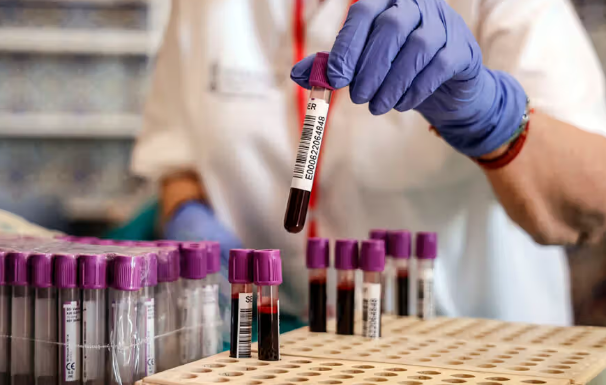New Blood Test Detects Alzheimer’s with 90% Accuracy
Researchers at Lund University in Sweden have developed an exciting new blood test called PrecivityAD2, which can detect Alzheimer’s disease (AD) with around 90% accuracy. This breakthrough allows for earlier diagnosis and is especially useful for people with mild cognitive impairment. The results were published in the peer-reviewed journal JAMA.
Importance of Early Detection
Alzheimer’s disease, a common form of dementia, affects many people, with one in five women and one in ten men being diagnosed. Early detection is crucial because it helps prevent misdiagnoses, which occur in about 25% to 35% of cases, even with specialists. A reliable blood test simplifies this process, making it easier to diagnose correctly.
Advantages of a Blood Test
Traditionally, diagnosing Alzheimer’s has involved expensive and complex procedures like PET scans for amyloid and Tau proteins or lumbar punctures to analyze cerebrospinal fluid. This new blood test offers a simpler alternative, requiring only a blood sample to get results.
How the Test Works
The test measures specific proteins in the blood that are linked to Alzheimer’s disease. It looks at the ratios of:
- Phosphorylated-tau217 (p-tau217) to non-phosphorylated-tau21
- Two forms of amyloid-beta (AB42 and AB40)
These proteins are key indicators of Alzheimer’s pathology and help the test accurately identify the disease.
Clinical Validation
In a study with 1,213 patients undergoing cognitive evaluation, about half showed signs of Alzheimer’s. The new blood test proved to be more accurate than traditional methods, with 91% accuracy compared to 73% for dementia specialists and 61% for primary care doctors. As more studies are conducted, this blood test could revolutionize how Alzheimer’s is diagnosed and treated. It is expected to make diagnosis more affordable and accessible, though availability might vary by region, such as in countries where advanced diagnostic tools are not as common.
More About Alzheimer’s Disease
Alzheimer’s disease was first identified in 1906 and affects around 50 million people worldwide. It is the most common type of dementia, making up 60-80% of cases. Unlike what many believe, Alzheimer’s is not a normal part of aging. Risk factors include genetics, head injuries, and cardiovascular issues. The disease is characterized by high levels of beta-amyloid plaques and tau tangles in the brain. While there is no cure, early diagnosis and lifestyle changes can help manage symptoms.
Month: Current Affairs - August, 2024
Category: Science & Technology Current Affairs






